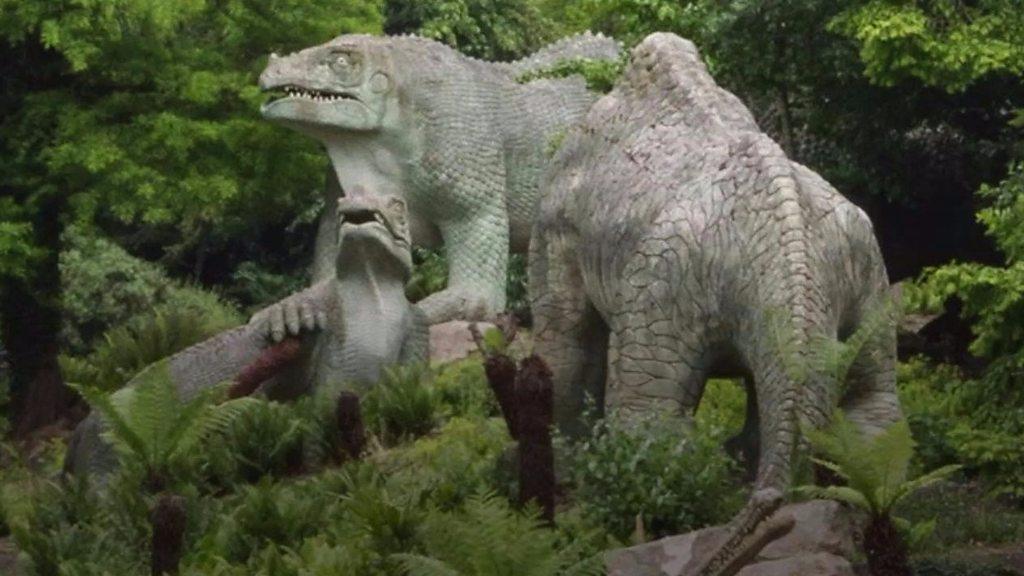Crystal Palace Park dinosaurs turned into interactive 3D models
- Published
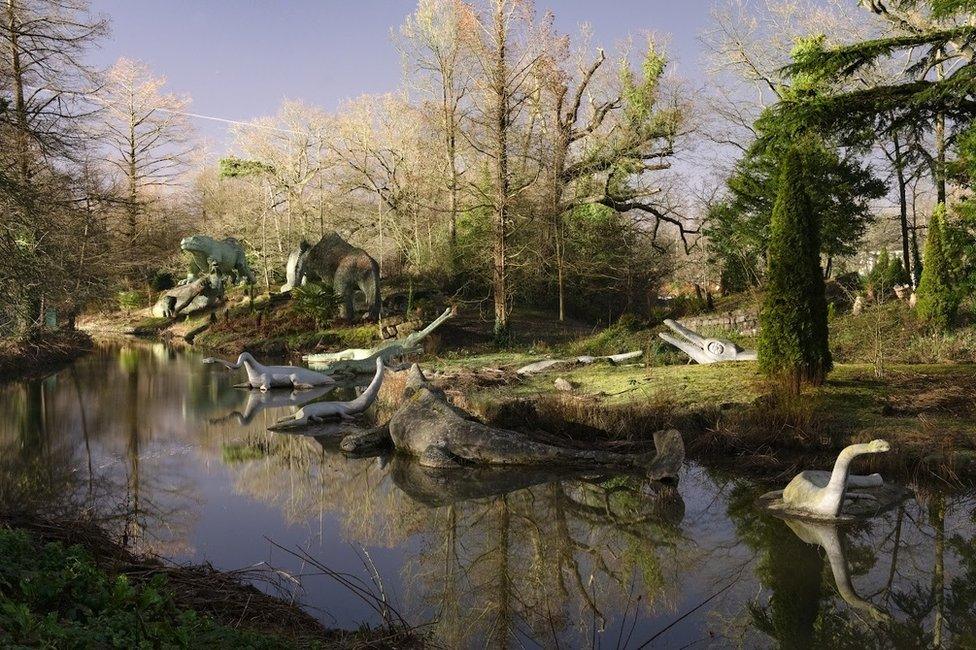
Only a few of the life-size models are technically dinosaurs while several have inaccuracies due to limited knowledge in the field at the time
People are now able to take a closer look at the famous Crystal Palace Park dinosaurs after they were turned into interactive 3D models.
The 29 Grade I-listed sculptures were created between 1853 and 1855 and sit on an island in the south London park.
Digital scans were carried out to create the photogrammetric models, external.
Historic England said the work meant it could study "the sculptures' conservation problems" and aid restoration work.
The heritage body and the Friends of Crystal Palace Dinosaurs created the 3D models.

The park's Hylaeosaurus armatus, shown in its 3D form, has several innaccuracies because it was based on fossils from a number of different types of dinosaur
The creatures were created by artist Benjamin Waterhouse Hawkins and are thought to be the world's first attempt to model extinct animals at life-size, based on fossil remains as evidence.
While commonly known as the Crystal Palace dinosaurs, only four of the sculptures are technically dinosaurs with the others being ancient mammals, amphibians, and marine and flying reptiles.
While knowledge of dinosaurs has improved since their creation, meaning several of them have inaccuracies, they are still considered by many to be an important moment in the history of science.
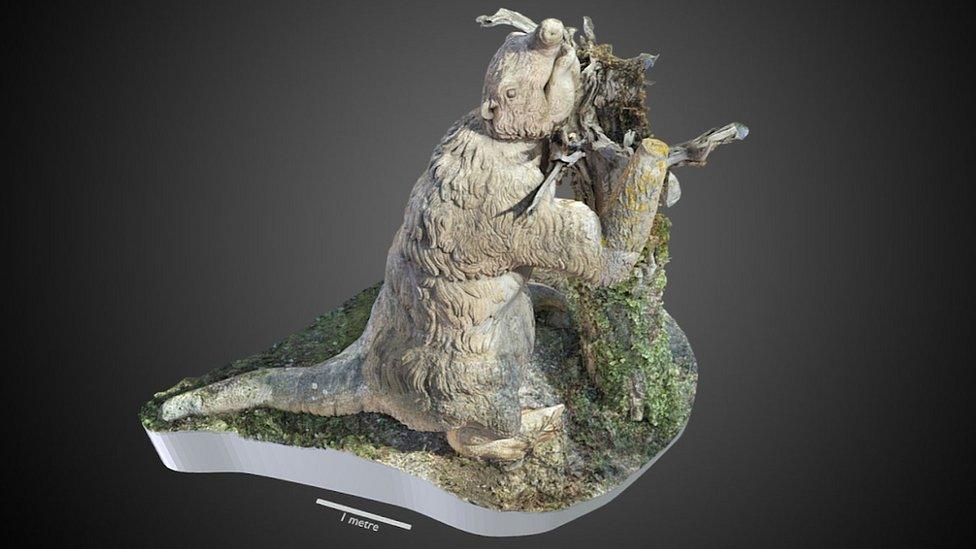
Megatherium americanum lived in the grasslands and woodlands of South America during the last Ice Age
However, being nearly 170 years old, the models are very fragile and have suffered damage.
Historic England said the new interactive models mean people can "get up close and personal with the 'dinosaurs' without disrupting the vulnerable animal artworks or their setting".
"The models also allow conservators to benchmark the condition of the fragile creatures, decide where repairs are most needed, and help shape plans for their maintenance into the future."
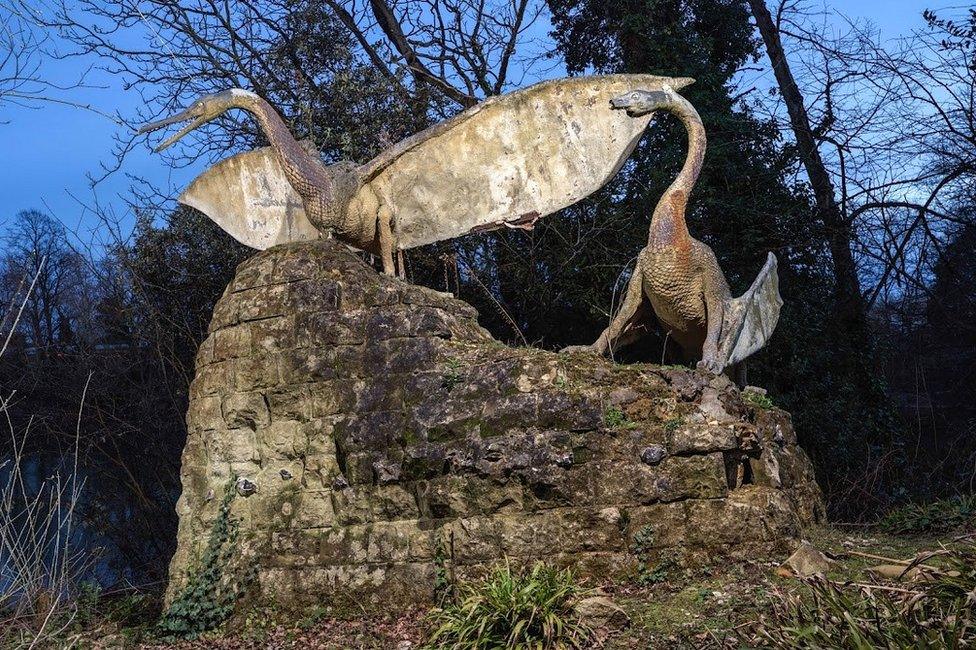
Flying reptiles like these Pterodactyle are among the Victorian sculptures

Follow BBC London on Facebook, external, Twitter , externaland Instagram, external. Send your story ideas to hellobbclondon@bbc.co.uk, external
Related topics
- Published3 July 2023
- Published18 May 2021
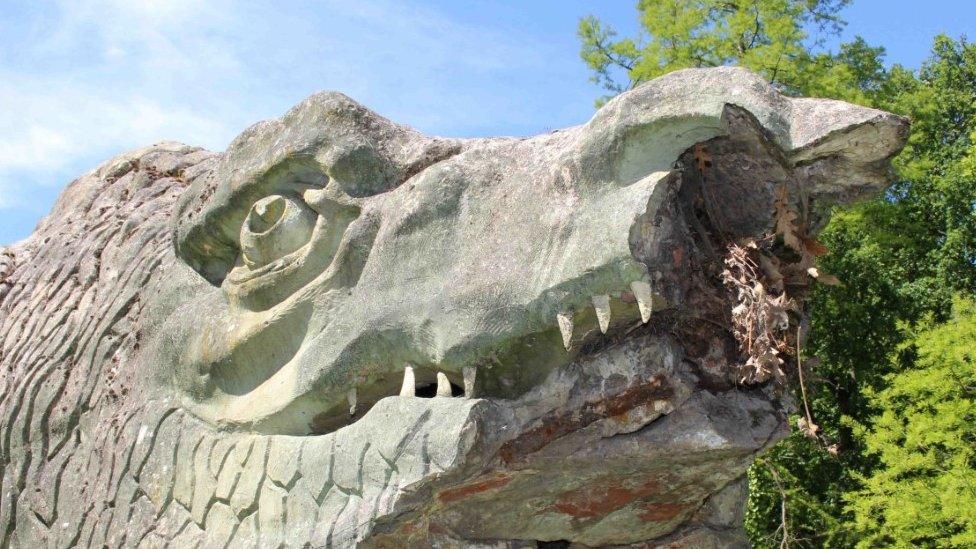
- Published24 May 2020

- Published28 November 2018
